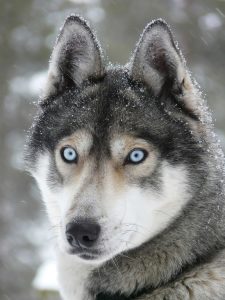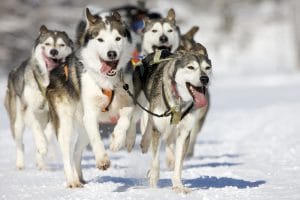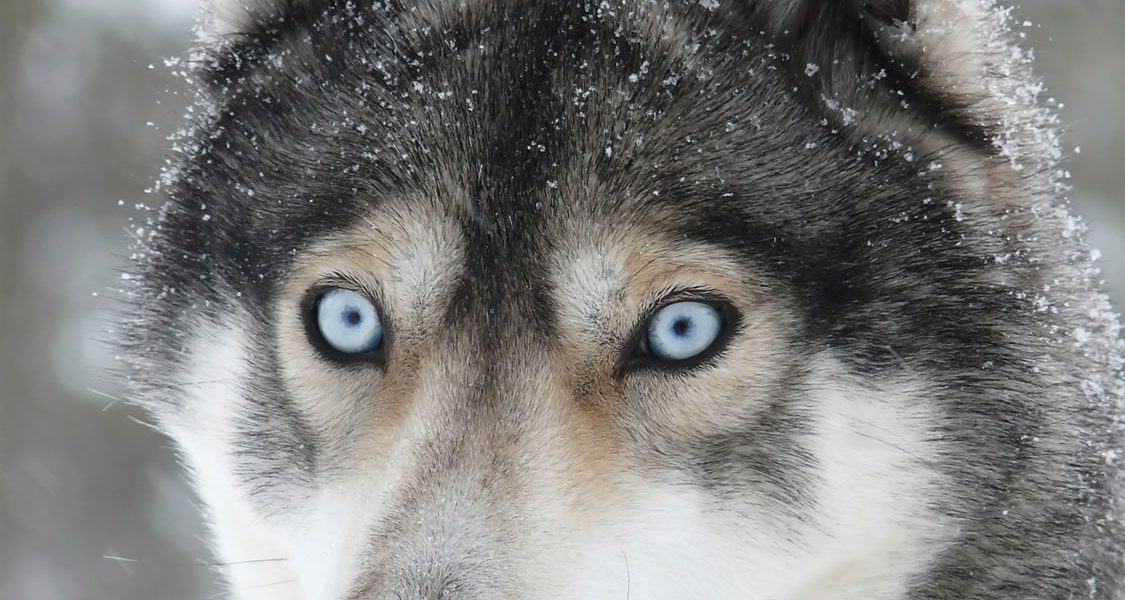 As you may have guessed by their name, the Siberian Husky originates from Siberia. They’re thought to be one of the oldest breeds of dogs in the world and were originally used by the Chukchi tribe as a working dog – their seemingly tireless energy helped them in their sled pulling, reindeer herding and watchdog tasks.
As you may have guessed by their name, the Siberian Husky originates from Siberia. They’re thought to be one of the oldest breeds of dogs in the world and were originally used by the Chukchi tribe as a working dog – their seemingly tireless energy helped them in their sled pulling, reindeer herding and watchdog tasks.
In 1908 the breed started being exported from Siberia into North America. Their primary reason for being exported was to help miners in the Alaskan gold rush, but it soon became clear that were a great choice for sled racing and they soon replaced the bigger dogs that traditionally pulled sleds in the north. In 1925 they were used to bring diphtheria medicine to patients in a remote Alaskan city. Today they’re a popular family pet and an iconic breed.
Siberian Huskies are medium sized, compact, and strong. Siberian Huskies are between 51 and 60 centimetres tall and weigh between 16 and 27 kilgrams. Their eyes are almond shaped and come in a variety of colours. In some Siberian Huskies, one eye may be blue while the other is brown. This is not common for most breeds, but something that happens often in Huskies. Their feet are large (sometimes described as “snow shoes”) and have extra hair to help keep warm while running through the snow. A Husky’s tail is curved and carried over their back.
A Husky’s coat can come in a variety of colours, but the most common are black and white, grey and white, and copper-red and white. Usually their legs, the tip of their tail, and the markings on their face are white. There is an almost endless variety of markings this breed can display. The coat itself is thick and double layered, it is protective against harsh weather conditions although it can also reflect the sun too. Shedding can be a bit of a problem and weekly grooming is recommended.
The Siberian Husky is a playful, happy dog that does very well in a family atmosphere. They aren’t very dependable as watch dogs as they are as friendly towards strangers as they are their own families. They’re very social dogs that have a lot of energy, especially when they’re young. They make great jogging companions on days that aren’t too hot.
 Because they’re such social dogs they need to have company as much as possible. If left alone for long periods of time they become bored and unhappy. These dogs have a tendency to howl if bored. They can be a little bit difficult to housebreak, but they love being outside where they can roam. They’re a sled dog through and through, so it makes sense that they’d do best in open spaces where they can run and play. Huskies do need plenty of exercise and stimulation and if this isn’t provided it can lead to them exhibiting unwelcome behaviours such as crying, scent marking and chewing.
Because they’re such social dogs they need to have company as much as possible. If left alone for long periods of time they become bored and unhappy. These dogs have a tendency to howl if bored. They can be a little bit difficult to housebreak, but they love being outside where they can roam. They’re a sled dog through and through, so it makes sense that they’d do best in open spaces where they can run and play. Huskies do need plenty of exercise and stimulation and if this isn’t provided it can lead to them exhibiting unwelcome behaviours such as crying, scent marking and chewing.
Huskies have a relatively long lifespan and are generally healthy dogs. They do run a risk of seizures and eye defects. Although it is not very common, there is a chance they can develop hip dysplasia.
This breed is still used as sled dogs today. In the UK many owners race their dogs on forest tracks using special sleds. This is great exercise for both the dog and the owner, not to mention a really fun way to work out extra energy. Because of their high energy levels, dogs of this breed need to have some sort of regular exercise.


